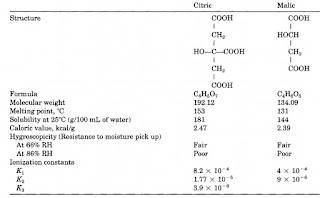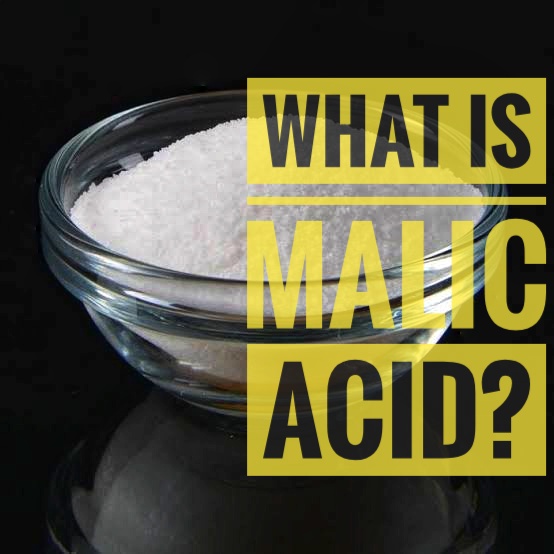What is malic acid?
Malic acid is the second most popular general purpose food acid although less than one-tenth the quantity of citric acid used. Malic acid is a white, odorless, crystalline powder or granule with a clean tart taste with no characterizing flavor of its own.
 |
| The properties of malic acid are listed in picture Table. Malic acid is made through chemical synthesis by the hydration of maleic (malic) acid. |
An inspection of malic acid structure in Table reveals that malic acid has an asymmetric carbon which provides for the existence of isomeric forms. The synthetic procedure for malic acid produces a mixture of the D and L isomers.
The item of commerce, racemic D, Lmalic acid does not occur in nature although the acid is affirmed as GRAS for use in foods. L-Malic acid is the isomeric form that is found in nature. It is the predominant acid in substantial quantity in apples and cherries and in lesser quantities in prunes, water melon, squash, quince, plums, and mushrooms.
Like citric acid, L- malic acid plays an essential part in carbohydrate metabolism in man and other animals . There are no salt s of malic acid that are items of commerce for the food and beverage industries. The application for malic and citric acid cover the same broad range of food categories.

